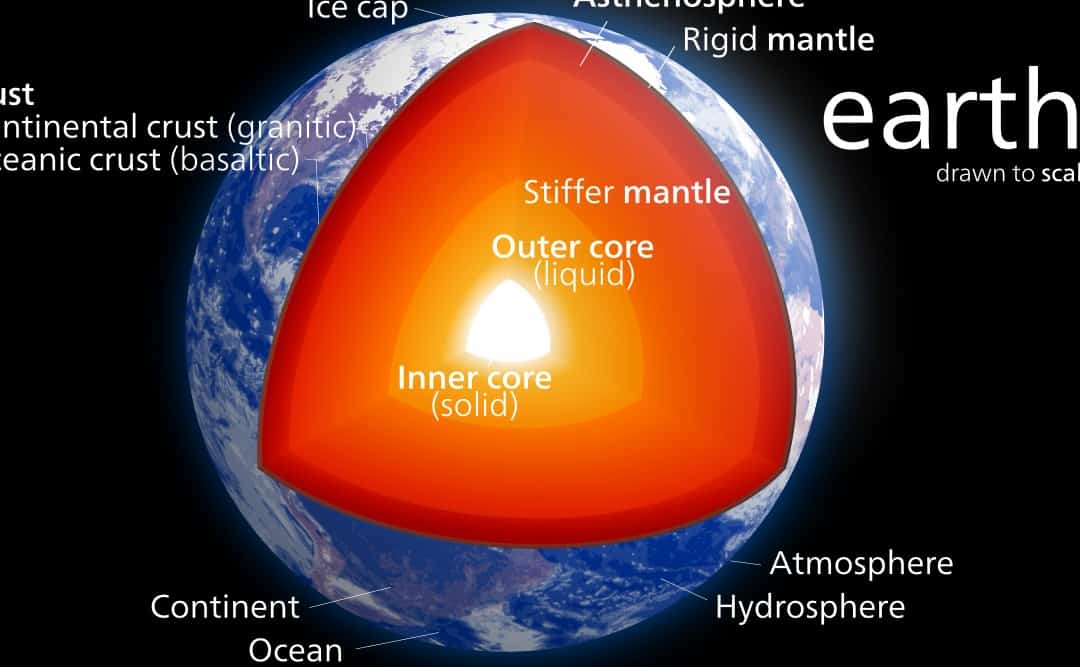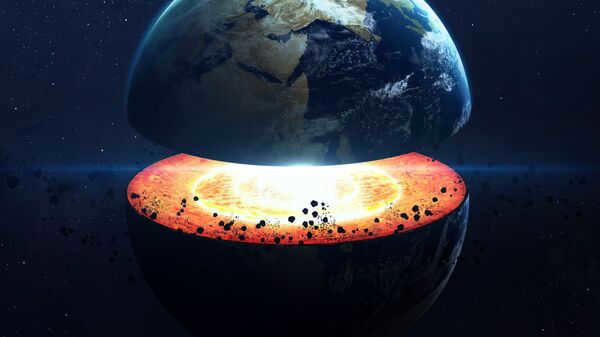
MOSCOW, June 13 – RIA Novosti, Tatiana Pichugina. According to scientists, the northern magnetic pole is currently shifting its position at a rate of 55 kilometers per year, moving away from Canada and towards the Severnaya Zemlya archipelago. This phenomenon is believed to be a result of disturbances occurring in the planet’s liquid core, which cannot be directly observed. The exact nature of these disturbances remains unclear, but there are numerous hypotheses attempting to explain them.
Mission to the “iron world”
In the year 2022, NASA has plans to dispatch a spacecraft to explore the asteroid Psyche, which is situated between Mars and Jupiter. This asteroid has earned the nickname of the “iron world”.
Through the analysis of sunlight reflection and the rate at which it heats up and cools down, scientists have deduced that Psyche is predominantly composed of metal, if not entirely. It is hypothesized that this asteroid may be the origin of iron meteorites, although such occurrences are extremely rare, with only around two hundred documented events.
The prevailing theory suggests that Psyche is the remnant core of a planet from the same group as Earth, which has lost its outer layers. This planet was forming in close proximity to the Sun alongside Earth and Venus, but a cataclysmic event or a process of re-heating may have caused it to shed its outer layers, leaving behind the metallic core that we observe today. This mission to Psyche aims to shed light on the mysteries of this “iron world” and potentially uncover valuable insights about the formation and evolution of planets.
Scientists are definitely interested in reaching the “iron world,” not just for the purpose of studying geological deposits for future generations. Their primary goal is to thoroughly examine the equivalent of the Earth’s core.
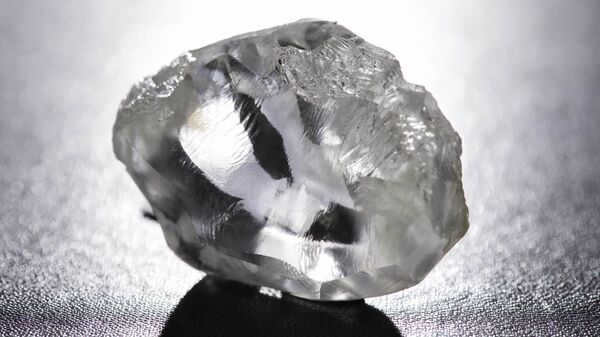
Why is the Earth’s core composed of iron?
The Earth’s core is an incredibly fascinating object, with its composition and temperature influencing the surrounding layers and atmosphere. The core serves as the origin of the magnetic field that has played a crucial role in the development of life on Earth. Additionally, it holds the key to unraveling the enigma of planetary formation.
Scientists explore the Earth’s interior through the use of seismic waves and intricate modeling techniques. In essence, the planet is comprised of three main layers: the crust, the mantle, and the core.
The liquid outer part of the nucleus does not allow elastic S-waves to pass through, making it fluid. On the other hand, the inner part of the core, which has a radius of approximately 1221 kilometers, weakly transmits S-waves, indicating that it is either solid or in a state that mimics solidity. The boundary between these two layers within the core is quite distinct, as is the boundary between the core and the lower mantle.
Scientists believe that the core primarily consists of iron, with small amounts of nickel (as evidenced by the composition of iron meteorites), silicon, sulfides, and oxygen.
Observations of seismic wave travel patterns suggest that the inner solid core rotates slightly faster than the mantle and crust, at a rate of about 0.15 degrees per year.
There are numerous hypotheses surrounding the formation of the Earth’s core, including its timing and method. Additionally, the ratio of chemical elements within the core, as well as its lack of uniformity, raise further questions. The temperature of the core is another aspect of interest, as well as the source of its energy. Ultimately, the question of why the core formed within the planet remains a crucial inquiry. These inquiries have sparked a multitude of theories and suppositions.
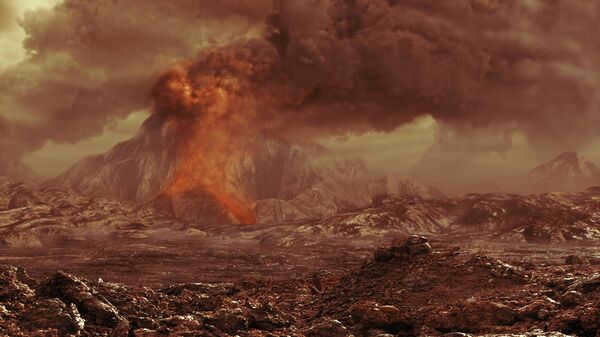
Which of the twins is the lucky one?
Venus is often regarded as Earth’s twin, as it is only slightly smaller in mass and size. However, the current conditions on Venus’s surface are vastly different. Unlike Earth, Venus lacks its own magnetic field, atmosphere, and biosphere.
Instead, Venus is characterized by a poisonous atmosphere filled with sulfuric acid clouds. There is no evidence of a magnetic field in its geological history, although it is possible that it once existed. These differences may be attributed to the divergent origins of the two planets.
Venus and Earth originated in the identical region of the gas-dust nebula encompassing the Sun. The planetary “seeds” experienced gradual growth, gradually accumulating additional material. As their mass reached a critical threshold, they initiated a process of intense heating, causing them to melt. Consequently, the material was partitioned into distinct fractions: heavier elements settled towards the core, while lighter elements ascended towards the surface.
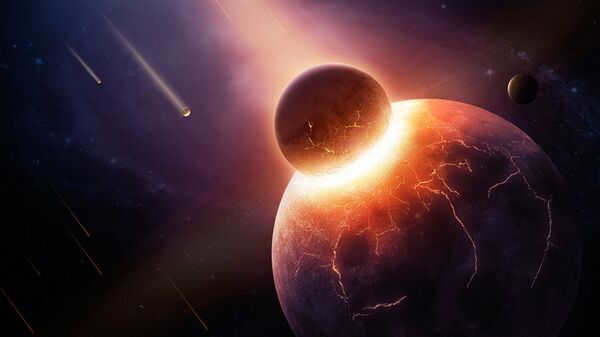
However, the transformation of Venus proceeded smoothly, without any cosmic catastrophe. The separation process concluded safely, resulting in the creation of a solid iron core that lacks the ability to produce a magnetic field.
There is an alternative theory: the spontaneous solidification of molten iron. However, in order for this to occur, the temperature would have to drop to a thousand Kelvin, which is not feasible.
Therefore, the researchers from the United States have come to the conclusion that the crystallization nuclei originated externally. They may have originated from the lower mantle, taking the form of large iron masses that are tens or hundreds of meters in size. The question remains as to where these masses originated.
One possible answer can be found on Earth’s surface in the form of ancient ferruginous quartzites. It is possible that over three billion years ago, these rocks composed the ocean floor. Due to tectonic plate movement, they were subducted into the mantle and eventually reached the core.
© Illustration by RIA Novosti. Alina Polyanina, NASA Approximately 4 billion years in the past, our planet Earth experienced a collision with an enormous celestial object. This collision had the effect of agitating Earth’s developing core, causing the separation of its liquid outer layer, and ultimately giving rise to a magnetic field. Moreover, the impact dislodged a portion of Earth’s matter, which eventually formed into the Moon.

Over four billion years ago, the Earth experienced a massive collision with a cosmic object. This collision caused the Earth’s core to become disturbed and its outer layer to separate, resulting in the formation of a magnetic field. Additionally, the collision caused some of the Earth’s material to be ejected, which eventually formed the Moon.
Development of a magnetic shield.
The age of the nucleus can be determined by analyzing the ratio of radioactive isotopes of lead, which is estimated to be around four and a half billion years. The exact time when the magnetic field was formed is still unknown, but its presence can be traced back to the oldest rocks on Earth, which are approximately 3.5 billion years old.
According to the geodynamo model, the Earth’s magnetic field is generated by a conducting fluid that undergoes rotation and mixing.
However, a challenge arises as the magnetic field of rapidly rotating liquids tends to weaken over time. Geological evidence suggests that the intensity of the Earth’s magnetic field has remained constant within the observable time frame. This indicates the existence of a permanent and powerful energy source that sustains the magnetic field.
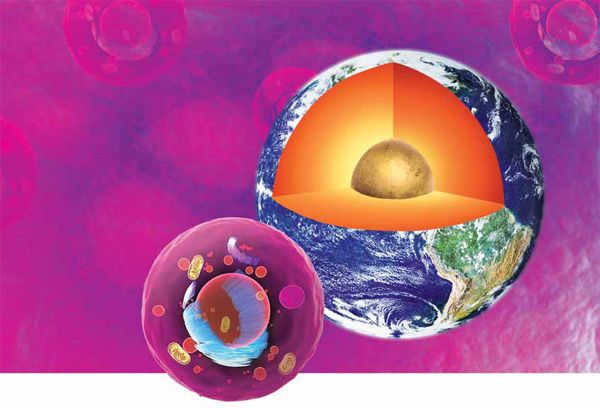
Approximately 2.6 billion years ago, a critical event took place that determined the destiny of life on our planet. This event marked the pinnacle of both an ecological crisis and an evolutionary breakthrough. Had the catastrophe been slightly more severe, Earth could have remained devoid of life indefinitely. Conversely, had it been less intense, bacteria might still reign as the sole inhabitants of our planet today.
The emergence of eukaryotes, which are cells with a distinct nucleus, represents the second most significant milestone in the history of biological evolution, surpassed only by the origin of life itself. In this article, we will delve into the questions of when, how, and why the cell nucleus came into existence.
Life on Earth has come a long way since the first living cell to the existence of mammals and humans. Throughout this journey, there have been numerous significant events, remarkable discoveries, and ingenious inventions. Among these, which one stands out as the most crucial? Could it be the development of the human brain or the evolution of animals on land? Or is it the emergence of multicellular organisms? Scientists are nearly unanimous in their belief that the greatest milestone in evolution was the advent of modern-type cells – cells with a nucleus, chromosomes, vacuoles, and other organs, whose complex names we vaguely recall from our school days. These are the very cells that constitute our body.
At the start, cells exhibited significant differences. They lacked nuclei, vacuoles, and other “organs”, and their chromosome took the shape of a ring. This is the current organizational structure of bacterial cells, the Earth’s initial inhabitants. The gap between these primitive cells and their modern, enhanced counterparts is far greater than that between a jellyfish and a human. How did nature succeed in bridging this divide?
A world dominated by bacteria
Cyanobacteria are not only ancient organisms, but also highly revered. They were the ones responsible for “inventing” chlorophyll and photosynthesis. Over the course of millions of years, their inconspicuous work gradually enriched the ocean and atmosphere with oxygen, paving the way for the emergence of actual plants and animals. Initially, all the oxygen was utilized to oxidize the iron that was dissolved in the ocean. This resulted in the precipitation of oxidized iron, which eventually led to the formation of the largest iron ore deposits. It was only after the iron had been fully oxidized that oxygen began to accumulate in the water and enter the atmosphere.
For a minimum of one billion years, cyanobacteria ruled over the Earth as the supreme beings and were nearly the sole occupants. The depths of the world’s oceans were covered in carpets of bluish-green. Within these carpets, known as cyanobacterial mats, other bacteria coexisted with the blue-greens. They had all adapted perfectly to one another and to the extreme conditions of the ancient ocean. During this time, known as the Archean Era (Archean), the Earth was incredibly hot. The atmosphere was rich in carbon dioxide, leading to a powerful greenhouse effect. As a result, by the end of the Archean, the oceans had reached temperatures of 50-60°C. Carbon dioxide dissolved in the water, making it acidic, and the hot, acidic waters were bombarded by harsh ultraviolet light (since the Earth lacked a protective ozone layer at that time). Additionally, the water contained a significant amount of toxic salts from heavy metals. Constant volcanic eruptions, ash and gas emissions, and unpredictable changes in environmental conditions made life even more challenging for the planet’s initial inhabitants.
The bacterial communities that emerged in such an unfriendly habitat were remarkably robust and resistant. As a result, their evolution proceeded at a sluggish pace. They had already acclimated to nearly every condition and had no incentive to enhance themselves. A catastrophe was required for life on Earth to progress and grow more intricate. It was imperative to dismantle this seemingly eternal and invincible world of super-resistant bacteria in order to create space for something novel.
A cataclysmic event – the birth of the Earth’s core.
A much-anticipated revolution, marking the end of a prolonged period of stagnation and propelling life out of a bacterial “dead end,” took place approximately 2.7-2.5 billion years ago, towards the conclusion of the Archean era. According to Russian geologists O. G. Sorokhtin and S. A. Ushakov, the authors of the groundbreaking physical theory of Earth’s evolution, it was during this time that our planet experienced its most colossal and devastating transformation in recorded history.

It was an immense catastrophe, however, the cyanobacteria managed to withstand its devastating effects. They managed to survive, despite facing numerous challenges. The disappearance of the carbon dioxide atmosphere resulted in severe starvation for them, as cyanobacteria, like higher plants, rely on carbon dioxide as a raw material for producing organic matter. The bacterial mats became less abundant. The once solid blue carpets that covered the seabed are now torn apart. The bacterial world did not perish, but it experienced significant damage, with noticeable “holes” and “gaps” appearing within it. It was within these “holes” and “breaches” of the ancient world that the first organisms with a fundamentally different structure emerged – more complex and advanced single-celled creatures that were destined to become the new rulers of the planet in that distant era.
The origin of the cellular nucleus
The bacterial cell is a highly intricate living structure. However, the cells of higher organisms, such as plants, animals, fungi, and even protozoa like amoebae and infusoria, exhibit even greater complexity. Unlike bacterial cells, which lack a nucleus or any other internal “organs” enclosed by a membrane, higher organisms have cells that possess a nucleus surrounded by a double membrane. This is why they are referred to as “eukaryotes,” meaning “having a true nucleus” in Greek. Furthermore, these eukaryotic cells contain various internal organelles, with mitochondria being the most crucial ones. Mitochondria function as specialized powerhouses, breaking down organic matter into carbon dioxide and water while utilizing oxygen as an oxidizing agent. Our respiration is solely aimed at supplying oxygen to the mitochondria in our cells. Apart from mitochondria, plastids, specifically chloroplasts, hold immense importance in eukaryotic cells as they are responsible for photosynthesis. Interestingly, plastids are exclusive to plants.
However, the nucleus is the key component of a eukaryotic cell. It is responsible for housing the genetic information, which is encoded in DNA molecules using a four-letter language known as the genetic code. Unlike eukaryotic cells, bacteria also possess DNA, but it is found within the cytoplasm where active metabolic processes occur. This means that the DNA molecule is constantly exposed to a chemical environment resembling a factory or laboratory, where countless substances are constantly appearing and disappearing. Any of these substances have the potential to impact the genetic information and the molecular mechanisms that interpret and execute it. In such an “unsanitary” environment, it is challenging to establish an efficient and reliable maintenance system for storing, reading, reproducing, and repairing DNA. Furthermore, creating a molecular mechanism capable of intelligently controlling such a system based on the given situation is even more difficult.

As it is widely recognized, a single book has the potential to be interpreted in various ways (especially if it is a great book). Depending on one’s preparation, mood, and life circumstances, a reader may discover one aspect of the book during their initial reading, and upon revisiting it a year later, they may uncover something entirely different. This concept can also be applied to the genome of eukaryotes. Based on the prevailing conditions, the genome is “decoded” in distinct manners, resulting in the development of diverse cell types. Consequently, this mechanism of non-heritable adaptive variability emerged as a remarkable “innovation” that significantly enhances the resilience and vitality of organisms.
If it weren’t for this gene regulation system, multicellular animals and plants wouldn’t have been able to exist. The entire concept of a multicellular organism revolves around genetically identical cells transforming into various types based on the environment they’re in. These cells take on different roles, form distinct tissues and organs. Prokaryotes (bacteria) are fundamentally incapable of such differentiation.
What is the mechanism behind bacteria’s ability to adapt to changing environments? They possess a high rate of mutation and engage in gene transfer among themselves. While the majority of bacteria do not survive these changes, the sheer number of bacteria ensures that a few mutants may be able to thrive in the new conditions. This process is both reliable and incredibly inefficient. However, it ultimately reaches a point where no further improvements or complexities can be achieved. Bacteria are therefore unable to make any progress. This is why contemporary bacteria closely resemble their Archean counterparts.
The earliest evidence of eukaryotes can be found in sedimentary rocks that are approximately 2.7 billion years old. This coincides with the formation of Earth’s iron core. The event that nearly wiped out the bacterial world appears to have prompted life on Earth to contemplate innovative strategies for adapting to a shifting environment. Life is constantly evolving and cannot remain stagnant. Therefore, it is possible that the appearance of the cell nucleus on Earth was a direct result of the emergence of the planetary nucleus.
In the early 1900s, researchers made an interesting observation: plastids and mitochondria have a striking resemblance to bacteria in terms of their structure. Over the course of nearly a century, data and evidence were collected, ultimately leading to the firm conclusion that the eukaryotic cell emerged through the symbiotic coexistence of multiple bacterial cells.
Plastids and mitochondria have been well understood for a long time. These eukaryotic cell “organs” have their own circular DNA, which is identical to that of bacteria. They reproduce independently within the host cell by dividing in half, just like prokaryotes. They do not appear spontaneously, but rather are bacteria. Specifically, mitochondria resemble alpha-proteobacteria, and plastids resemble cyanobacteria. These famous “inventors” of chlorophyll and photosynthesis have never shared their discovery with others. Even now, as integral parts of plant cells, they control almost all photosynthesis on Earth and thus, the production of organic matter and oxygen.
However, the origin of the host cell itself remains a mystery. Which microorganism served as its “progenitor”? Among the existing bacterial species, no suitable candidate has been identified for a significant period of time. The reason for this is that the genes of eukaryotes, which are located in the cell nucleus, exhibit a distinct structural difference compared to the genes of most bacteria. Eukaryotic genes are composed of numerous distinct and meaningful segments, interspersed with lengthy sections of non-coding DNA. In order to decipher such a gene, all of its individual segments must be meticulously excised and reassembled. This type of genetic organization is not observed in typical bacteria.
Scientists were surprised to discover that the genome structure, along with many other unique characteristics of eukaryotes, was present in an unexpected and enigmatic group of prokaryotic organisms known as archaebacteria. These organisms possess remarkable resilience, able to survive even in boiling geothermal springs. Certain archaebacteria thrive at temperatures ranging from +90-110 °C, and begin to freeze at +80 °C.
Currently, the prevailing belief among scientists is that eukaryotic cells emerged when certain archaebacteria, possibly adapted to acidic and hot water environments, acquired intracellular symbionts from ordinary bacteria.
The emergence of intracellular cohabitants has resulted in the presence of multiple genomes within a single cell, necessitating the implementation of a management system. To address this need, the cell nucleus was formed as a central governing entity. One hypothesis proposes that the nuclear envelope could have potentially developed as an unintended outcome of the uncoordinated actions of various gene groups responsible for the formation of cell membranes in newly fused bacterial entities.
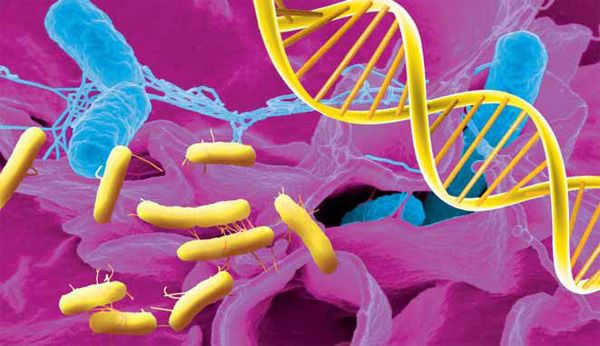
The diverse microorganisms that gave birth to the eukaryotic cell did not immediately merge into a single organism. Initially, they coexisted in a bacterial community, gradually adapting to each other and finding mutual benefits in this cohabitation. The oxygen produced by cyanobacteria was toxic to them, but over time, they developed various strategies to cope with this byproduct of their existence. One of these strategies was respiration. Recent research has revealed that the protein-enzyme complex responsible for oxygen respiration in mitochondria evolved from a small change in the enzymes involved in photosynthesis. From a chemical standpoint, photosynthesis and oxygen respiration are essentially the same reaction, just occurring in opposite directions.
CO2 + H2O + energy ↔ organic matter.
This is the process by which cyanobacterial mats may have beneficial cohabitants – microorganisms that are capable of respiration. These microbes not only consume excess oxygen, but also generate a significant amount of energy, which they are able to share with their neighboring organisms.
The third member of this community is Archaebacteria. These organisms can absorb surplus organic matter from cyanobacteria, break it down, and transform it into a more easily metabolizable form for the respiring bacteria.
These microbial communities are still present in today’s world. The bacteria in these communities live together in a surprisingly friendly and harmonious way. They have even developed the ability to communicate through special chemical signals, which helps them coordinate their actions. Additionally, they actively exchange genes. Interestingly, this ability also makes it difficult to combat infectious diseases, as any one bacterium can acquire a gene for antibiotic resistance through random mutation, and other species of bacteria can then acquire this gene through gene exchange. This dynamic makes the bacterial community appear as a single organism.
The community transformed into a living entity. People united, relinquishing their autonomy in pursuit of forging a new, superior collective identity.
Bricks
A preferred contention of those who oppose the theory of evolution is the impracticability of constructing a novel intricate formation (such as a fresh gene) via the selection of arbitrary variations (mutations). Detractors of evolution posit that a whirlwind sweeping through a municipal waste site is equally probable to fashion a spacecraft out of refuse and rubble. And they are entirely correct!
However, it seems that large-scale evolutionary changes do not occur solely through the selection of numerous small, random mutations. The case of the emergence of the eukaryotic cell, which is considered the most significant evolutionary event since the beginning of life, clearly illustrates how Nature utilizes pre-existing, proven “building blocks” to create something entirely new, complex, and progressive. Nature assembles a new organism, much like a constructor, by skillfully combining these building blocks. This principle of using blocks to construct new living systems appears to be pervasive throughout biological evolution and greatly influences its pace and unique characteristics. New genes, proteins, and groups of organisms are formed based on this principle, using large, pre-prepared, and tested building blocks. (Interestingly, the genes of archaebacteria and eukaryotes appear to have been fragmented, possibly to facilitate the recombination of these convenient blocks.)
The field of science is making continuous progress in its understanding of the natural world. Slowly but surely, we are coming to the realization that the various living organisms that surround us are not just a random assortment of species and shapes, but rather a intricate and interconnected organism that follows its own set of unchanging laws. Every living organism, down to the smallest cell, including ourselves, are essential components of the grand “constructor” that is Nature. Furthermore, each of these components possesses its own unique and irreplaceable role.
This text was adapted from an article originally written for the magazine “Paradox”.
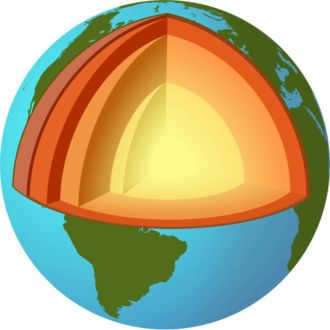
The innermost part of the Earth, known as the core, is a crucial component of our planet’s structure. Situated beneath the Earth’s mantle, the core is believed to be primarily composed of an iron-nickel alloy, with trace amounts of other siderophilic elements. Extending to a depth of 2900 km, the core has an average radius of 3.5 thousand kilometers. It is composed of two distinct layers: a solid inner core with a radius of approximately 1300 km, and a liquid outer core with a radius of about 2200 km. In some cases, a transitional zone is identified between these two layers. The temperature at the center of the Earth’s core can reach a scorching 5000 degrees Celsius, while the density is approximately 12.5 tonnes per cubic meter and the pressure can reach up to 361 gigapascals (equivalent to 3.7 million atmospheres). The mass of the core is estimated to be between 1.932-10.24 kilograms.
A widely held misconception
It is sometimes erroneously asserted [by whom?] that the iron in the core is the origin of the Earth’s magnetic field. This misconception stems from the general public’s understanding of a permanent magnet. However, it should be noted that the ferromagnetic characteristics of iron (as well as any metal in general) cease to exist above the Curie point. The true source of the Earth’s magnetic field is a conductor in motion, such as liquid metal or hydrogen.
Study History
Information must be verifiable or it may be questioned and deleted.
You have the ability to modify this article by including citations from reliable sources.
This mark was established on May 12, 2011.
One of the first individuals to propose the existence of a region with higher density within the Earth was Henry Cavendish. He computed the mass and average density of the Earth and discovered that it is significantly greater than the density of rocks found on the Earth’s surface.
German seismologist E. Wichert confirmed its existence in 1897, while American geophysicist B. Gutenberg determined its depth (2900 km) in 1910.
V. M. Goldschmidt, the founder of geochemistry, suggested in 1922 that the core was formed through gravitational differentiation of the Earth’s primary material during its formation or at a later stage.
In the 1940s, the German scientist A. Eiken proposed an alternative hypothesis stating that the iron core of our planet actually formed within the protoplanetary cloud. This idea was further developed in the 1960s and 1970s by the American scientist E. Orovan and the Soviet scientist A. P. Vinogradov.
Back in 1941, Kuhn and Ritman put forward a theory suggesting that the Earth’s core is made up of metallic hydrogen, based on the belief that the Sun and the Earth have the same composition and calculations regarding hydrogen’s phase transition. However, this hypothesis has never been experimentally confirmed. Subsequent shock compression experiments have actually shown that the density of metallic hydrogen is approximately ten times lower than the density of the Earth’s core. Nevertheless, this hypothesis has been later modified to explain the internal structure of gas giant planets like Jupiter and Saturn. It is now believed that the magnetic field of these planets originates specifically from their metallic hydrogen cores.
Furthermore, V. N. Lodochnikov and U. Ramsay put forward the idea that the lower mantle and the core share the same chemical makeup – at the boundary between the core and mantle, mantle silicates transition into a liquid metallic phase (referred to as the metallized silicate core) at 1.36 Mbar.
Composition of the Core
The precise composition of the core remains unknown and can only be inferred from various sources. One possible source of information is iron meteorites, which are remnants of asteroid and protoplanet cores. However, it is important to note that iron meteorites cannot be considered an exact representation of the Earth’s core as they formed in much smaller celestial bodies with different physical and chemical conditions.
Ultimately, the core’s makeup can be approximated based on geochemical analysis. By determining the Earth’s initial composition and calculating the proportions of elements found in other geospheres, it is possible to construct estimations of the core’s composition. Conducting experiments at high temperatures and pressures to observe how elements distribute between molten iron and silicate phases greatly aids in these calculations.
O.G. Sorokhtin put forward a theory regarding the composition of the outer nucleus, suggesting that it is made up of a substance known as “nuclear matter”, which does not exist under normal circumstances. This “nuclear matter” is an oxide of iron with a valence of one, Fe2O. Under a pressure of 250-300 GPa, the “nuclear matter” breaks down into iron and oxygen. Therefore, the inner core, which experiences pressures exceeding the aforementioned value, consists of iron with a small amount of nickel. According to Sorokhtin, over time, iron oxides from the Earth’s mantle sink into the core under the influence of gravity and transform into “nuclear matter”. As a result, oxygen is released, and as the quantity of iron oxides in the mantle diminishes, more and more oxygen is released. Some of this oxygen is released into the atmosphere. Until the beginning of the Phanerozoic eon, the production of oxygen was minimal. However, an increase in its concentration in the atmosphere during that time period led to a rapid surge in the development of life on Earth, which is commonly referred to as the “Cambrian explosion”. Nevertheless, an even greater increase in the partial pressure of oxygen in the Earth’s atmosphere, reaching approximately 0.5 MPa in 500-600 million years, will result in global warming and the extinction of all living organisms. Eventually, this will lead to the complete boiling of the ocean long before the Sun transforms into a red giant.
| 7.35 | 79.39 | 4.87 | 2.30 | 4.10 | 5820 | 7790 | 2530 | 3690 |
| 6.0 | 85.5 | 5.20 | 1.90 | 0 | 300 | 9000 | 2500 | 2000 |
Books and Articles
- Petrographic Dictionary, written by V. Ryka and A. Malishevskaya, published by “Nedra” in 1989.
- Allegre, C.J., Poirier, J.P., Humler, E. and Hofmann, A.W. (1995). The Chemical-Composition of the Earth. Earth and Planetary Science Letters 134(3-4): 515-526. doi: 10.1016/0012-821X(95)00123-T.
- Treatise on Geochemistry, 2003, Volume 2 The Mantle and Core:
- Partition Coefficients at High Pressure and Temperature written by K. Righter and M. J. Drake
- Experimental Constraints on Core Composition by J. Li
- Compositional Model for the Earth’s Core by W. F. Mc Donough.
Also check out
Sources
| Earths Age – Geological history – Geochronological scale – History of life on Earth – Ice ages – Young Sun paradox – Giant impact theory – Evolutionary timeline | 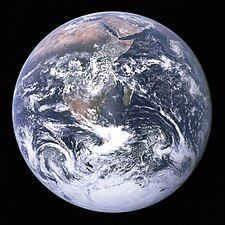 |
| Australia – Asia – Antarctica – Africa – Europe – North America – South America – Atlantic Ocean – Indian Ocean – Arctic Ocean – Pacific Ocean – Southern Ocean – Atmosphere – Hydrosphere – Continental drift – Earth’s crust – Continent – Crust – Mantle – Ocean – Earth’s structure – Supercontinent – Plate tectonics – Earth’s shape – Plate tectonics – Shape of the Earth – Core | |
| Biome – Biodiversity – Biosphere – Wilderness (English.) – Climate – Nature – Natural Area – Biodiversity Conservation (English.) – Ecological niche – Ecology – Ecosystem | |
| Future of the Earth – Hypothetical natural satellites of the Earth – Earth Day – Peace – Natural disaster – Daily rotation of the Earth – Rings of the Earth |
Wikimedia Foundation. 2010.
There have been numerous theories proposed regarding the composition of the Earth’s core. Dmitri Ivanovich Sokolov, a geologist and scholar from Russia, suggested that the substances within the Earth resemble the mixture of slag and molten metal found in a furnace.
This analogy has been supported by multiple findings. Scientists have extensively studied iron meteorites that have landed on Earth, considering them to be fragments of a disintegrated planet’s core.
Therefore, it can be concluded that the Earth’s core is primarily composed of dense molten iron.
In 1922, Victor Moritz Goldschmidt, a geochemist from Norway, proposed the concept of a universal stratification of the Earth’s material when the entire planet was still in a liquid state. He arrived at this idea by drawing parallels with the metallurgical processes observed in steel mills. According to Goldschmidt, during the phase when the Earth was a liquid melt, its material separated into three distinct liquids – silicate, sulfide, and metallic.
As the planet continued to cool, these liquids eventually solidified and formed the primary layers of the Earth – the crust, the mantle, and the iron core!”
In more recent times, however, the concept of a “hot” origin for our planet has increasingly been challenged by the idea of a “cold” creation. In 1939, Lodochnikov put forward an alternative theory regarding the formation of the Earth’s interior. By this point, the concept of phase transitions in matter was already well-established. Lodochnikov proposed that these phase changes become more intense with increasing depth, resulting in the material being divided into layers. In this scenario, the core does not necessarily have to be made of iron. It could potentially consist of highly compressed silicate rocks in a “metallic” state.
This concept was adopted and further developed in 1948 by Finnish scientist V. Ramsay. It was discovered that while the Earth’s mantle has a different physical state from the core, there is no reason to assume that the core is made up of iron. In fact, overconsolidated olivine could be just as dense as metal…
Thus, there were two hypotheses regarding the core’s composition that were mutually exclusive.
The first hypothesis was based on E. Wichert’s ideas about an iron-nickel alloy with small amounts of lighter elements as the material of the Earth’s core.
The second hypothesis, proposed by V. N. Lodochnikov and further developed by V. Ramsay, stated that the core’s composition is not different from the mantle’s composition, but the substance within it exists in an exceptionally dense metallized state.
To determine the direction in which the scales should lean, scientists from multiple nations conducted experiments in laboratories and meticulously tabulated and compared their calculations with the findings from seismic studies and laboratory experiments.
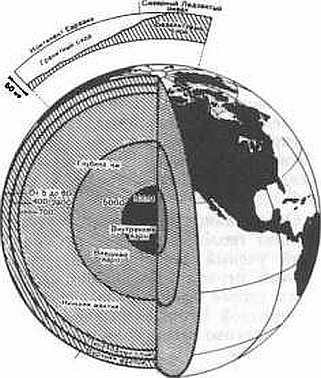
In the 1960s, scientists reached a definitive conclusion: the theory that silicates become metallic at the pressures and temperatures found in the Earth’s core has been disproven! Furthermore, extensive research has convincingly shown that the center of our planet must contain at least eighty percent of the total iron supply… So, is the Earth’s core made entirely of iron? Well, not exactly. A pure metal or metal alloy compressed in the planet’s core would be too heavy for the Earth. Therefore, it is reasonable to assume that the material in the outer core is composed of iron compounds with lighter elements such as oxygen, aluminum, silicon, or sulfur, which are abundant in the Earth’s crust.
However, the specific composition of these compounds remains unknown.
According to the latest findings in geological science, the Soviet scientist concludes that in its initial stages of formation, the Earth was likely relatively uniform. Its various substances were distributed evenly throughout its volume.
However, as time went on, heavier elements, such as iron, started to sink deeper into the mantle, essentially “sinking” towards the planet’s core. If this is the case, then when comparing young and old rocks, we can expect the younger ones to have a lower concentration of heavy elements, including iron, which are prevalent in the Earth’s composition.
The examination of ancient lavas has provided evidence supporting this hypothesis. However, it is unlikely that the Earth’s core is composed solely of iron, as it is too light for that.
What other substances accompanied iron on its journey towards the center?
The scientist experimented with various elements, encountering difficulties with some that did not dissolve well in the melt and others that were incompatible.
Then, Sorokhtin had a brilliant realization: what if the most common element, oxygen, was the companion of iron?
Indeed, calculations revealed that iron oxide, the compound of iron and oxygen, appeared to be too light for the core. However, under the conditions of compression and heating in the depths, iron oxide would undergo phase changes as well.
In the extreme conditions near the Earth’s center, one atom of oxygen could be held by only two atoms of iron. Consequently, the resulting oxide would have a greater density…
It was incredibly satisfying when the obtained result demonstrated that the density and mass of the Earth’s core, composed of iron oxide undergoing phase changes, precisely matched the required value in the modern core model!
Presented here is the contemporary and potentially the most credible representation of our planet in the annals of its exploration. According to Oleg Georgievich Sorokhtin’s book, "The Earth’s outer core is comprised of iron oxide Fe2O, while the inner core is composed of metallic iron or a blend of iron and nickel." Additionally, Sorokhtin suggests that the intermediate layer F, situated between the inner and outer cores, can be regarded as being constituted of iron sulfide – FeS troilite.
Countless exceptional scientists from various disciplines, including geology, geophysics, oceanography, and seismology, are actively involved in formulating the contemporary theory regarding the separation of the Earth’s core from its primary matter. According to these experts, the ongoing tectonic processes within our planet’s interior will persist for an extensive duration, spanning billions of years into the future. Only after this unimaginable timespan will the Earth gradually cool down and transform into an inert celestial body. However, what will transpire until then?
How many years has humanity been counting? One million, two million, or perhaps even two and a half million?
Throughout history, mankind has achieved remarkable feats. They have transitioned from walking on all fours to walking upright, discovered how to control fire, harnessed the power of nuclear energy, and even sent robots to explore other planets within our solar system. Additionally, they have ventured into the depths of space for technological purposes.
However, there is another frontier that humans are on the cusp of exploring – the Earth’s deep underground. This endeavor represents the next step in scientific progress, and it is a mission that falls upon the shoulders of today’s students, like yourselves.

Additional Reading
Composition of the Earth’s Mantle
The composition of the Earth’s mantle remains a mystery. Geologists have long been fascinated by the idea of extracting a sample from the deep interior, as it would provide crucial insights and potentially solve numerous unresolved questions. However, this goal is still far from being achieved. At present, scientists can only rely on indirect evidence to speculate about the possible composition.
The core and the covering
However, if that is the case, then one should not expect to find a straightforward depiction of events in the “Word”. Instead, it should be sought in a figurative manner, through hints, allegories, and comparisons, which guide the reader to the author’s conclusions. This principle, prevalent in contemporary literature, was also employed in the Middle Ages – for instance, in the
Iron Core
The study of the Moon’s evolution has been enhanced by each lunar mission carried out as part of the Apollo program. This process bears similarities to the evolution of Earth and other similar planets. The available seismic data provides limited insights into this process.
The core and the shell.
The core and the shell. However, in the “Word,” one should not expect a direct description of events, but rather a symbolic representation through hints, allegories, and comparisons that lead the reader to the author’s conclusions. This approach, commonly found in contemporary literature, was also utilized during the Middle Ages, such as in
CORE AND PERIPHERY
The nucleus and periphery of the FIRST GENERATION of political informals’ psychology developed during the period of transitioning from underground activities to the public sphere between 1986 and 1988. This transition allowed for the gradual expansion of political and civil liberties, which were gained through a process of gradual self-conquest.
The central core of the state – But at what price! There may be further violence. I am perplexed by the case of Romania, where individuals were shot. It is an unthinkable occurrence, it is a remarkably simple occurrence, it is easy to be deceived by it. However, I believe that if we can control the puppets of the
Chapter 2: The Atomic Nucleus
Chapter 2: The Atomic Nucleus The remarkable circumstances surrounding the extraction of radium, the accounts of the enchanting glow of the novel element, and particularly the bestowal of the 1903 Nobel Prize in physics upon Henri Becquerel and the Curie couple bring honor to the scientific community in Paris investigating the
LVI. The foundation of social hierarchy among the Baltic Slavs: the structure of land division into volosts (zhupa), and their association with cities. – The disintegration of the Stodor territory (Brandenburg) in the 10th century – The fragmentation of the Bodrica territory.
LVI. The basis of social order among the Baltic Slavs: the system of land division into volosts (zhupa), their connection with cities. – The fragmentation of the Stodor land (Brandenburg) in the 10th century – The fragmentation of the Bodritska land We have examined the main characteristics, regarding the indications of the contemporary.
Nucleus and shell
However, if that is the case, then within the “Tale,” one must not seek a straightforward account of events, but rather a symbolic one, conveyed through insinuation, allegory, and analogy, guiding the reader towards the author’s assertions. This concept, prevalent in contemporary literature, was also employed during the Middle Ages, as seen in the “History composed of appellations, allegories, and similes.”
Names form the fabric of history
History is woven together by countless names. My essay is filled with them. One day, my friend called me and asked if it was true that Tselinograd had reverted back to its original name – Akmola. (Now it is known as Astana.) And is it true that the name translates to White Graves? It’s an intriguing
The geographical heart of Siberia. The issue of statehood in Siberia is greatly complicated by the border that separates modern Siberia from Mongolia. This border, established by the Russo-Qing treaty of 1723, divided Sayano-Altai into two parts, with the northern part falling under the
Core and Circles
Under the conditions of a totalitarian regime, openly expressing an independent public stance while being completely defenseless against persecution would seem to lead to immediate collapse. However, it is precisely because of this openness that the human rights movement has unexpectedly demonstrated its strength.
What are the desires and fears of our liberal bourgeoisie?
What do our liberal bourgeoisie aspire to and what are they apprehensive of? The level of political education among the Russian populace and intelligentsia remains quite low. We have yet to cultivate distinct political beliefs and strong party affiliations. Instead, we often blindly accept any
9. What are the components of a developer and fixative?
Modern photography relies on a diverse range of chemicals and solutions. Some of these substances can be used to enhance or diminish the image on a negative if it appears too faint or too strong for some reason,
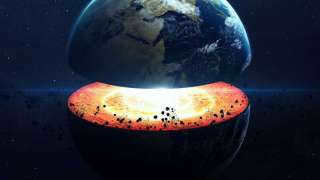
According to research, the northern magnetic pole of our planet is continuously moving from Canada to the North Earth archipelago at a rate of 55 kilometers per year. This ongoing process suggests that there is something unknown occurring in the liquid portion of the Earth’s core, leading to a future shift in the poles.
Reasons for the Earth’s Iron Core
Experts believe that the core of our planet holds the key to unraveling numerous cosmic enigmas. One of the core’s crucial roles is generating the magnetic field, which is vital for the origin of life. Additionally, studying the core will shed light on the formation of Earth’s planetary group.
What evidence supports the hypothesis that the Earth’s core is composed of iron? Firstly, the presence of a magnetic field indicates that the mantle alone couldn’t generate it due to its low electrical conductivity. However, a conducting liquid could fulfill this role. Consequently, it can be inferred that a portion of the core exists in a liquid state, with iron being a prevalent element in our solar system. This is supported by its high abundance in meteorites found on Earth.
The outer part of the Earth’s core does not allow elastic S-waves to pass through, indicating its liquid consistency. On the other hand, the inner part, with a radius of 1221 km, transmits these waves tightly, suggesting that it is solid. It is relatively easy to determine the boundary between these two layers, just like the boundary between the core and the lower mantle.
In addition to iron, which is the main component of the Earth’s core, there are also small proportions of nickel, silicon, sulfides, and oxygen. Based on observations of seismic wave propagation, it is believed that the core rotates slightly faster than the mantle and crust.
There is still no consensus among experts on several questions regarding the Earth’s core: How and when did it form? What is the temperature down there? Where does the energy come from? And why did it form within the planet in the first place?
Comparing the evolution of Earth and Venus
These two planets are often referred to as twins due to their similar mass and size. However, their conditions are vastly different. While Earth has a magnetic field, an atmosphere, and a biosphere, Venus only has a polluted atmosphere filled with sulfuric acid clouds. What accounts for these stark differences?
A team of researchers from Germany, Japan, and France has proposed that the stratification of celestial objects similar to Earth is a process that is characterized by stability and uniformity, with each layer eventually becoming homogeneous. However, in order for this stratification to become two-layered and heterogeneous, a collision with a massive celestial body would have been necessary. One part of this celestial body’s substance would have become embedded in the Earth’s interior, while the other part would have been ejected into orbit, ultimately forming the Moon. This powerful impact would have caused a remixing of the Earth’s internal composition and led to the partial melting of the core.
In the case of Venus, it either had the fortune or misfortune of not experiencing similar cosmic accidents during its evolutionary path, resulting in its stratification ending as expected. A solid iron core formed, which is unable to generate a magnetic field.
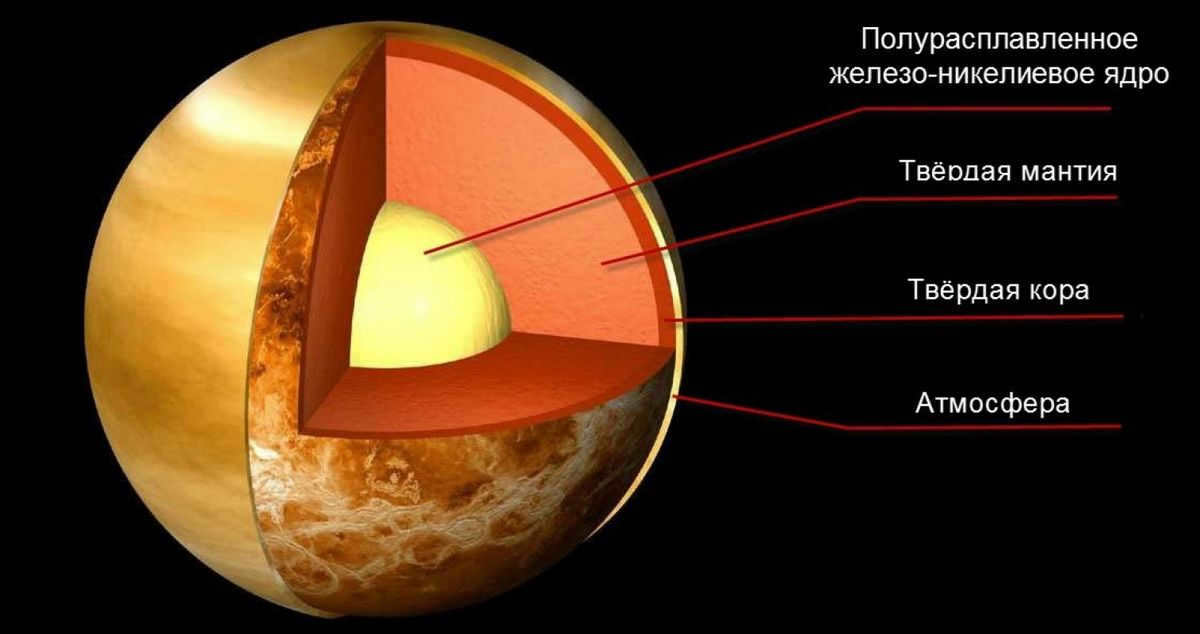
However, this is just one hypothesis. There is another theory suggesting an unexpected solidification of the molten iron. However, scientists consider this event to be impossible as it would require cooling to 1000 Kelvin. Therefore, experts propose that the crystallization seeds entered the core from the outside, possibly from the lower mantle. These seeds would be relatively large fragments of iron, but it remains unclear how they could have ended up there.
One possible clue could be ancient ferruginous quartzites on the Earth’s surface. Approximately three billion years ago, these rocks formed the ocean floor, which then sank into the mantle and eventually reached the core due to plate tectonics.
The origin of Earth’s magnetic field
Through analyzing the lead isotopes’ radioactive ratios, scientists studying planets have determined that the Earth’s core is approximately 4.5 billion years old. However, determining the age of the magnetic field is now a more complex task.
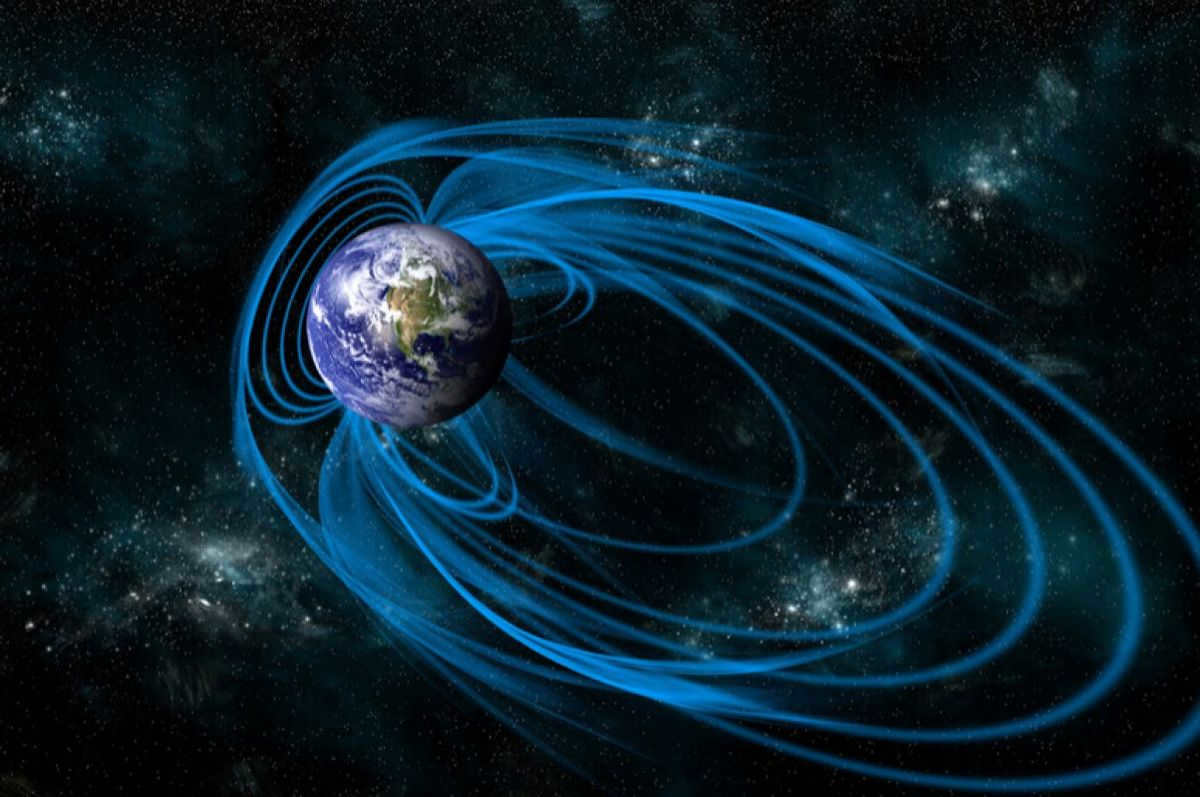
The presence of an iron core and a magnetic field on Earth raises the question of how and when they were formed. According to the geodynamo model, a conducting fluid with stirring during rotation is necessary for the existence of a magnetic field. However, there is a crucial factor at play: the magnetic field in rapidly rotating liquids naturally diminishes over time. Despite this, the intensity of Earth’s magnetic field has remained unchanged, as indicated by geological data. This suggests the presence of a powerful energy source that has sustained the magnetic field for such a long period.

